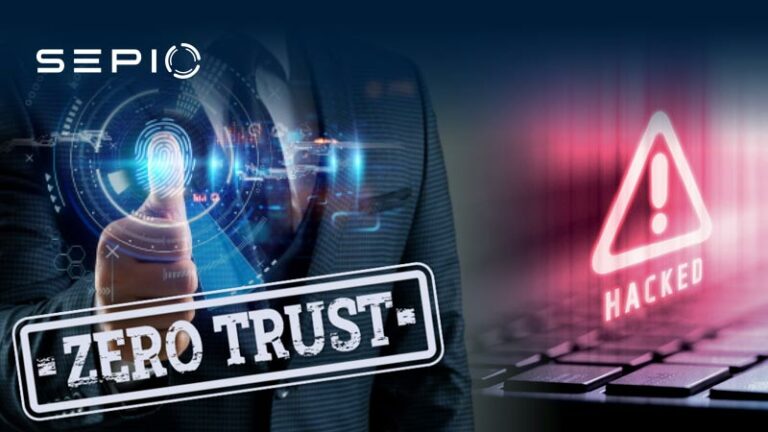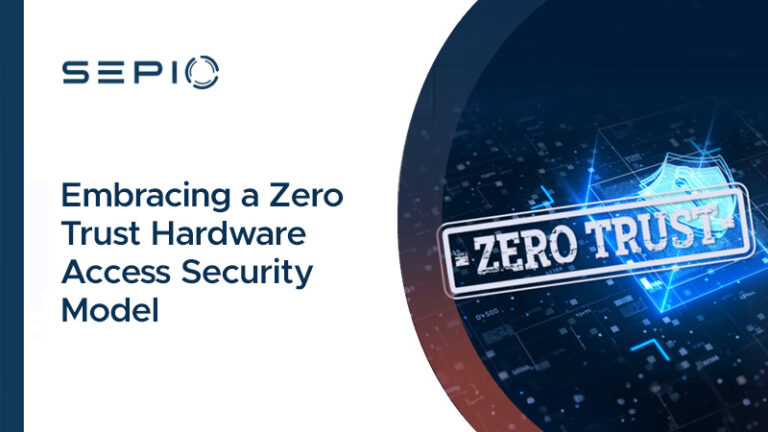The Zero Trust model represents a revolutionary shift in cybersecurity, operating under the assumption that threats can exist both inside and outside the network. Unlike traditional perimeter-based security, Zero Trust does not automatically trust any entity—whether inside or outside the network. This model challenges the outdated notion that users and devices within the corporate network are inherently safe, emphasizing the need to secure endpoints with Zero Trust Endpoint Security principles.
Understanding Zero Trust
At its core, Zero Trust operates on the principle that threats are omnipresent, necessitating rigorous verification of every access request. Instead of granting automatic trust, Zero Trust enforces a policy of least privilege, allowing access only when absolutely necessary and based on real-time assessments of users and devices. This continuous monitoring and dynamic access control aim to reduce potential attack surfaces and detect anomalies promptly, ultimately helping to secure Zero Trust Endpoints with robust methodologies.
How Zero Trust Enhances Endpoint Security
In today’s connected world, endpoints are prime targets for attackers. With the proliferation of devices and data, connectivity is no longer confined to specific locations. Endpoints and IoT devices, while enhancing operational efficiency, also present vulnerabilities that attackers can exploit. According to a Cybersecurity Insiders report, 61% of organizations are concerned about insecure network access through endpoints and IoT devices. To secure zero trust endpoints, organizations treat every device as a potential threat, applying rigorous access controls to mitigate risks.
Enhancing Cybersecurity with a Zero Trust Paradigm
Even more worrisome is that attackers’ tactics, techniques, and procedures (TTP) continue to evolve as security solutions become more robust. Malicious actors are increasingly finding innovative and deceptive ways to exploit the blind spots that traditional security measures often overlook. According to the Cybersecurity Insiders report, 40% of organizations claim they have insufficient protection against the newest threats, highlighting the urgent need for a more effective security strategy. Traditional perimeter-based network zero trust endpoint detection and response solutions are proving ineffective, as cybercriminals consistently demonstrate their ability to bypass many of these defense measures.
Malicious actors often exploit the unwarranted trust granted to internal users and devices, leading to successful attacks and data breaches. This reliance on implicit trust makes organizations vulnerable to network infiltration stemming from unauthorized devices and their users. The Zero Trust model fundamentally addresses this issue by eliminating the concept of trust. By treating every access request—whether from inside or outside the network—as potentially malicious, Zero Trust minimizes organizations’ susceptibility to attacks.
Proactive Cybersecurity and Enhanced Device Visibility
While it is still necessary for enterprises to implement traditional security solutions as a form of tactical response, zero trust provides a strategic framework that enables a shift to proactive security. As such, organizations can benefit from a hybrid environment that is both proactive and reactive. Thus, increasing the overall cybersecurity posture. Zero trust eliminates the concept of trust from the organization’s network architecture. Offering more opportunities to identify threats and take subsequent action to avoid an attack. Importantly, Zero trust protects the enterprise outside its typical perimeters, which is especially relevant as telework (BYOD Security Risks), and Internet of Things (IoT Security), devices become increasingly common “within” organizations. The Zero trust model ensures that it grants network access based on who, what, when, where, and how. However, to answer such questions, the enterprise must have complete device visibility.
Key Principles to Secure Endpoints with Zero Trust
- Never Trust, Always Verify: Enterprise network devices, and users, are typically assumed to be fully trusted as they are internal (Human Factors in Cybersecurity). However, both the device and the user’s identity can be spoofed by a malicious actor. Furthermore, do not assume unmanaged and remote assets are trustworthy since they are outside the enterprise’s control, even if they are considered “internal.” To eliminate the risks associated with trust, the Zero Trust model removes the trust component entirely. Treat every user, device, and application/workload as untrusted every single time.
- Verify Explicitly: In alignment with the Zero Trust Model, a dynamic policy, relying on identity management and other data sources, determines access to resources. Authentication and authorization should always consider all data points. Including user identity, location, device health, data classification, and more, to comprehensively evaluate the device and user’s identity. The evaluation should continue for as long as the session lasts to ensure maximum protection.
- Assume Breach: Zero Trust operates on the premise that breaches are inevitable. By denying access by default and scrutinizing all requests, Zero Trust limits the impact of potential breaches.
Implementing a Zero Trust Model
Implementing Zero Trust requires a comprehensive approach across the organization. Leaders must commit to necessary investments and foster an understanding of the model’s importance among staff to prevent security fatigue. Key components include physical layer visibility, robust access policies, and enhanced endpoint security.
Physical Layer Visibility
A Zero trust architecture relies on a strong Continuous Diagnostic and Mitigation system (CDM) to identify and manage devices, and to log network activity. To secure endpoints with Zero Trust, the enterprise must have complete assets and network visibility to accurately evaluate access requests.
A lack of visibility presents a substantial risk to the Zero trust model, which relies on device characteristics and device monitoring to evaluate access requests. A compromised device can bypass Zero trust security policy measures and gain network access by spoofing a legitimate, trusted device. Spoofing devices sit on the physical layer visibility and run completely passively with no inbound traffic manipulation. Operating under the radar of existing security software solutions, including NAC and IDS (Moving Beyond NACs).
As such, network access might be granted based on an inaccurate evaluation due to a lack of visibility. More worrying is that, by going undetected, Rogue Devices can bypass micro-segmentation. Enabling the attacker to move laterally throughout the network. Network access can facilitate harmful attacks. Since Spoofed Devices go undetected, the attacks can persist for long periods of time. Furthermore, as Zero trust is specific to network access, IoT security is at risk since IoT devices are also vulnerable to Physical Layer manipulation.
Growing Risks and Hardware Attack Threats
Within the framework of the Zero Trust Model, IoT cybersecurity covers a broad spectrum as the number of IoT devices in use has increased by astonishing amounts. Now includes everyday devices that are not typically deemed a security risk. And, since such devices require network access, they are an attractive target to hardware attackers. The risk of a compromised device is a serious concern for many organizations and is deemed the greatest endpoint and IoT threat for more than half of organizations (Cybersecurity Risk Management).
Access Policies
A Zero trust architecture uses data access policies as a source of information when evaluating access requests. Policy creation is based on asset and network traffic data. Yet the visibility challenges mentioned above will have a knock-on effect on effective policy creation. Policies developed without complete information due to a lack of asset and network visibility will negatively impact the validity and reliability of such policies.
Endpoint and IoT security policies are relevant to Zero Trust Model as these devices will make access requests. And the Policy Engine (PE) will depend on such policies to determine the access decision. Furthermore, since zero trust expands outside the enterprise’s perimeters, endpoint and IoT security policies are essential in ensuring that such devices maintain their security posture when operating in a non-enterprise-owned environment. However, 43% of organizations’ greatest security challenge is the inability to enforce access policies on endpoint and IoT devices. Harming the efficacy of the overall Zero trust architecture.
More importantly, any policies that are in place will not be enforceable on assets that are not visible. With a lack of device visibility limiting the Zero trust architecture efficacy, enterprises are beginning to focus on applying Zero trust to the hardware level. Starting at the first layer of defense ensures that a more comprehensive Zero trust architecture is in place to provide a stronger overall Zero Trust approach.
How Sepio Secures Endpoints with Zero Trust
Many organizations are adopting Zero Trust Endpoint Security because they can no longer assume that internal users and devices are trustworthy. Based on the principle of “never trust, always verify”, organizations adopt Zero Trust to enhance their security by treating every user and device. Internal or external. As a potential threat and eliminating any automatic trust given to those requesting network access. Additionally, with Zero Trust, users and devices are only provided with the necessary network access to perform the task. Reducing the possibility of malicious lateral movement. However, a Zero trust architecture relies on numerous data sources for the PE to make an accurate decision.
The lack of visibility and access policy challenges put the efficacy of the Zero Trust Model architecture at risk. Such challenges allow Rogue Devices to bypass identity-based authentication and micro-segmentation, providing an attacker with unauthorized network access. Without the enterprise even knowing. To mitigate the risk, organizations must focus on Zero Trust Hardware Access. Doing so means that Zero Trust applies to the first layer of defense. And can therefore better protect the organization from intruders.

Hardware Access Control with Sepio
With Sepio, organizations can achieve a Zero Trust Hardware Access approach by gaining complete device visibility and implementing robust policy enforcement mechanisms. This powerful combination also enables effective mitigation of rogue devices, significantly enhancing the overall security posture of the enterprise. As a result, hardware attack tools can no longer bypass the Zero Trust model, reinforcing the integrity of the network against potential threats.
Sepio provides visibility into every known and shadow asset within the environment, allowing organizations to identify and manage all devices connected to their network. This comprehensive view enables businesses to prioritize and mitigate risks associated with unauthorized or vulnerable devices. By continuously monitoring and assessing the security status of each asset, organizations can proactively address potential weaknesses before they can be exploited.
Take Control of Your Cybersecurity!
Achieve a Zero Trust Hardware Access approach with Sepio by gaining complete device visibility and implementing a robust policy enforcement mechanism. Protect your enterprise from rogue devices and strengthen your security architecture—ensuring hardware attack tools can no longer bypass your defenses.
See every known and shadow asset. Prioritize and mitigate risks effectively.
Schedule a demo Discover how to leverage Sepio’s patented technology to gain control over your asset risks and enhance your security posture.
Read the white paper Zero Trust Model - The Three Components (pdf)





